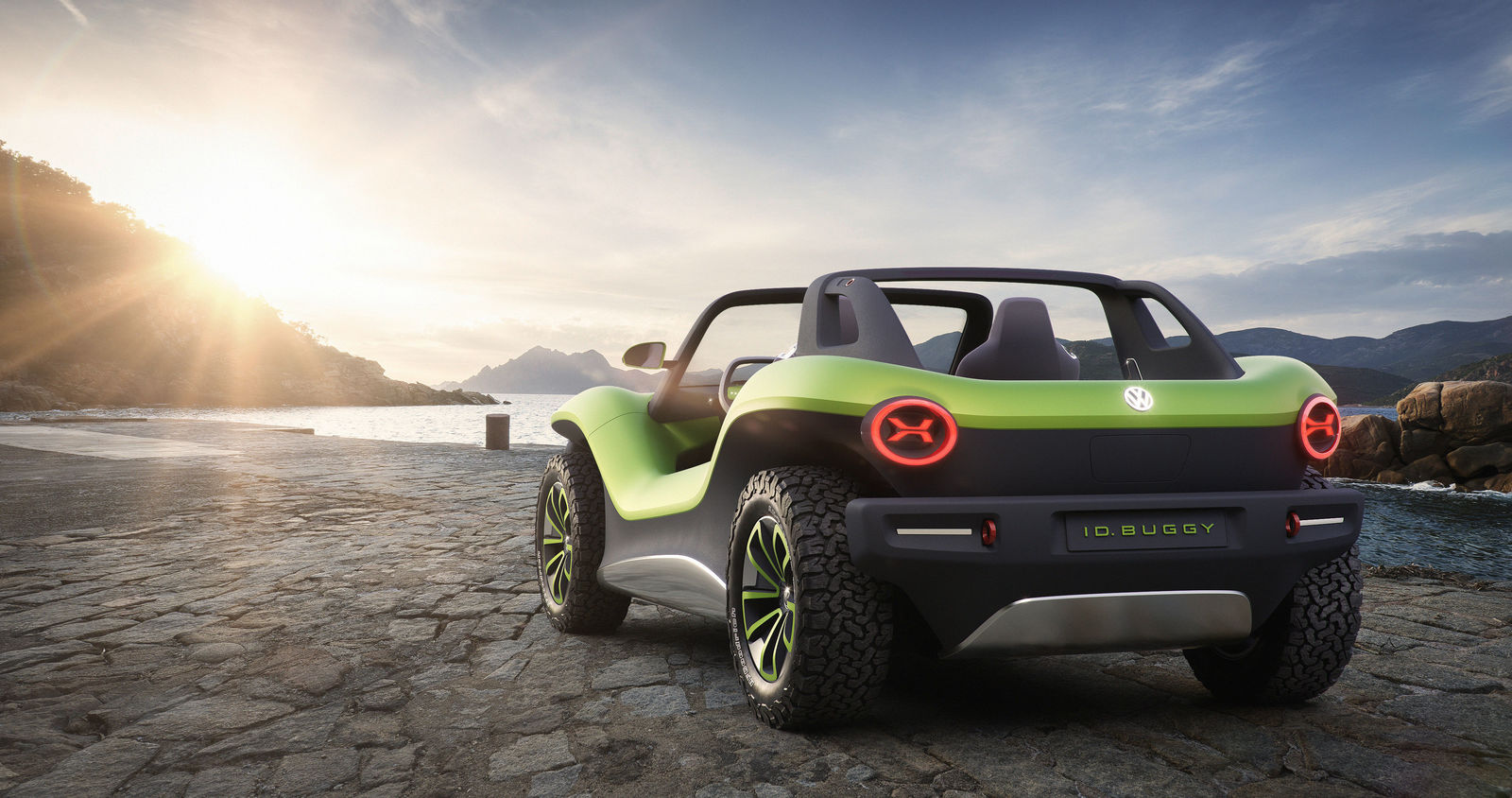This car is a leap in time: the ID. BUGGY. A snap of the fingers – and suddenly it’s as if someone has catapulted the concept of the Californian dune buggies of the 60s and the associated lifestyle into the future. “The purist design of the ID. BUGGY is the modern, retro-free interpretation of an icon. Unmistakably a buggy. And yet completely reconceived,” outlines Volkswagen Chief Designer Klaus Bischoff. A zero-emission high-tech vehicle for the summer, the beach, the city – visually and technically a new facet of the modular electric drive matrix (MEB). Volkswagen is showing the ID. BUGGY for the first time at the 89th Geneva International Motor Show (7 to 17 March 2019). Concurrently, the company is taking the opportunity of the trade show premiere to present a flexible charging station that is close to series production and is set to revolutionise charging infrastructure.
From boxer to electric motor. The parallels between the beach buggies of the past and the new ID. BUGGY shorten a period of five decades to a blink of an eye. All buggies from the 60s featured a high degree of modular variability – based on the chassis of the legendary Beetle with a four-cylinder boxer engine running at the rear. Small series manufacturers stretched a cover made of glass-fibre reinforced plastic (GFRP) over the chassis and engine of the Beetle, thus writing automotive history. The ID. BUGGY is tied to this cult concept with the technical possibilities of the modern age. The basis here is the progressive chassis of the MEB. Integrated in the vehicle floor: a high-voltage battery. This lithium-ion battery powers the 150 kW / 204 PS electric motor in the rear. An additional electric motor in the front axle is also conceivable in order to realise a four-wheel drive with an “electric propshaft”.
No roof, no doors. The MEB provides a good opportunity to combine the sharpest proportions with the new design DNA of e-mobility. The ID. BUGGY shows this par excellence. The clear, sculptured design language expresses the unique feeling of freedom when driving the buggy. To be able to feel the wind, a fixed roof and doors were deliberately dispensed with. This is why the resilient and minimalist design of the interior is characterised by waterproof materials. The concept car is a pure 2-seater; however, the ID. BUGGY can also be converted to a 2+2-seater.
Powered by Volkswagen, built by X. The composite body, manufactured in a mixed aluminium/steel/plastic construction, is self-supporting. Thanks to the modular design, the upper body area can be detached from the MEB chassis. A clear signal to small series manufacturers and start-ups: As in the past, Volkswagen is opening up to external producers with the ID. BUGGY concept. The offer: On this basis you can build the emission-free dune buggy for a new era – no matter whether for Santa Barbara in California, the Yalong Bay in China or St. Peter-Ording in Germany. In general, the MEB also has the potential to become the new technical basis for e-mobility for many automobile manufacturers. Background: At the beginning of 2019, Volkswagen announced for the first time that it intended to also make the MEB accessible to competitors as an electric vehicle platform.
Forerunner of an ID. model? At the same time, the ID. BUGGY illustrates the broad spectrum of emission-free mobility that can be achieved with the modular electric drive matrix within the Volkswagen brand: After the ID. (compact class), ID. BUZZ (van), ID. CROZZ (SUV) and ID. VIZZION (saloon), the new ID. BUGGY is the fifth concept car based on MEB, with which Volkswagen has used to confirm the multifaceted nature of the ID. Family. Unlike the four first concept cars, the ID. BUGGY has consciously been designed without an assisted driving system. It was conceived as a summer cruiser and to be especially fun to drive over short distances. The concept car shows by way of example that there is also room for a zero-emission vehicle with reduced equipment – of whatever type – in the future product range of the ID. Family.
